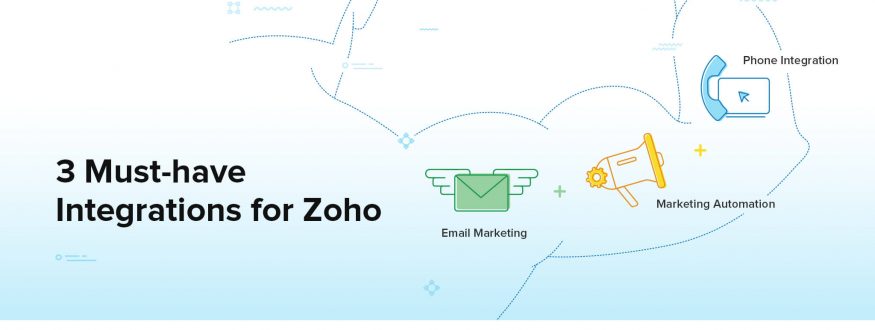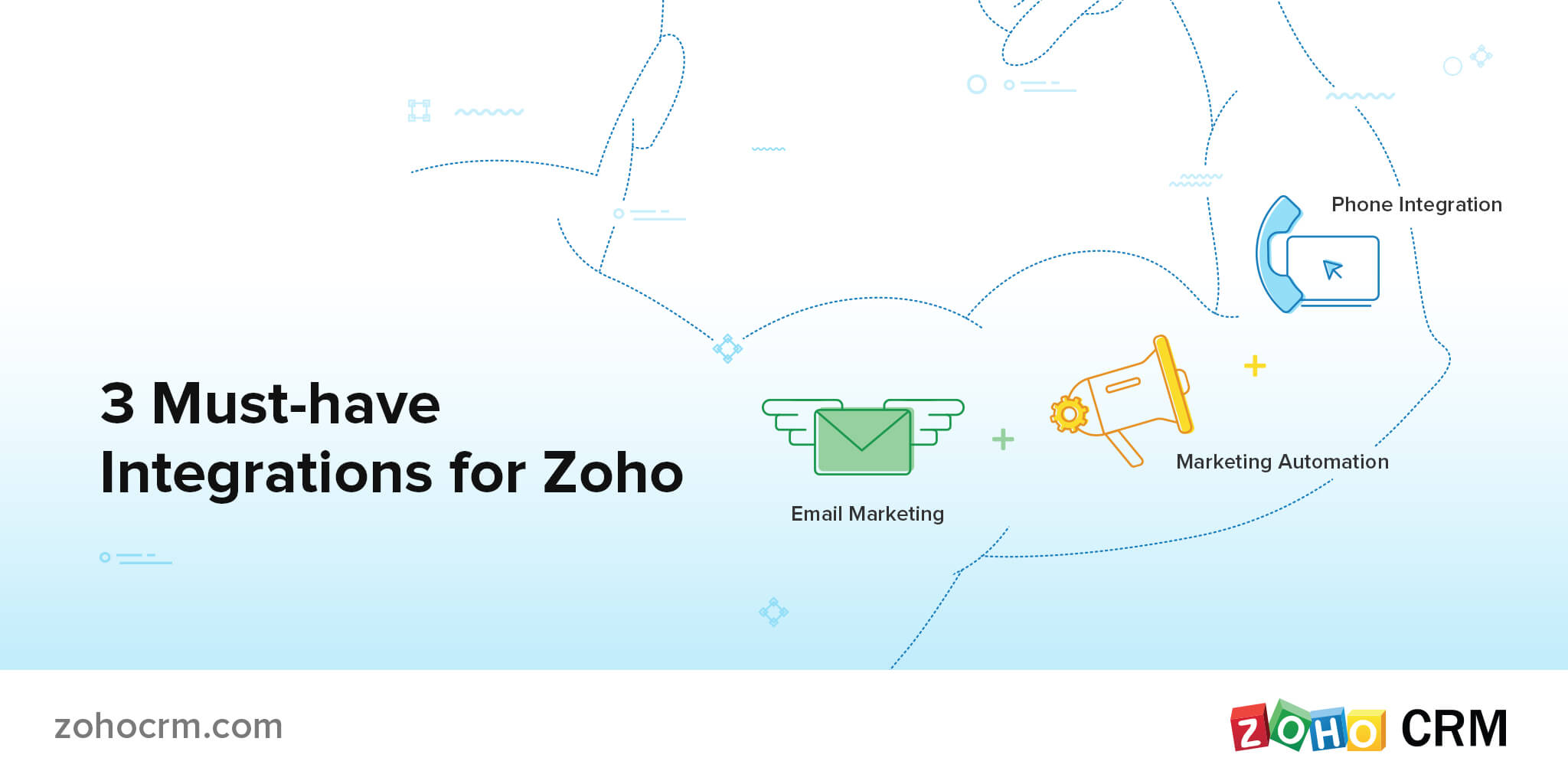This is a guest blog post by Vanessa Rombaut, a Digital Communications Marketer at PieSync. @PieSync helps you to sync your customer data bi-directionally between your favorite cloud apps and your CRM.
Zoho is a comprehensive business app suite, covering all of your needs, from sales to support to accounting. But you might find that you’re drawn to a variety of other business apps to help you further. Perhaps you want to combine the powers of Zoho CRM with a marketing automation app such as Hubspot, or a customer care platform such as Zendesk.
In this boundless cloudlandscape, combining apps is not only possible, it’s actually a good way to strengthen your business. It means you take the best of all the apps, and combine them into your very own app stack.
Here are three integrations that will strengthen your Zoho CRM.
Email Marketing
Email marketing apps can be a bit hit and miss. Some have great templates, others have amazing workflows. Try a few, and work out which one suits your email marketing best. I advise that you look for an email marketing platform that allows you to segment your customers and prospects based on parameters determined by your marketing and sales teams. This way, you can create highly-targeted email campaigns to nurture leads, upsell to existing customers, and reward your most loyal clients. Some applications that work well with Zoho are MailChimp, Emma, and Active Campaign.
Marketing Automation
Marketing automation has been hailed the number one productivity and insight tool set to skyrocket the marketing department’s lead generation and ROI. You can use marketing automation for lead scoring, sending out dynamic content, progressive profiling, and in-depth analytics on the effectiveness of your marketing campaigns. Some marketing automation tools that are popular include Sharpspring Marketo and HubSpot.
Phone Integration
This next tip comes from Jermey Marsan at Fit Small Business.
Zoho offers a two-way phone integration. You can make outgoing calls from Zoho CRM (simply by clicking a dial icon next to a contact), and automatically log the call afterwards with notes. For incoming calls, the system will automatically scan the phone number and show you a quick summary of the contact.
The long term benefits here are huge. When you depend on employees to log calls manually it’s a) very time consuming, and b) not always that accurate (inevitably, some calls are missed.) When calls are logged automatically, it’s a large burden lifted from employees, and, in addition, you get far more accurate reports–––whether you’re using them for performance reviews, market research, or to simply keep communication consolidated in one place.
The other benefit is about incoming calls. Zoho CRM has caller ID, showing you the contact’s name, business, position, photo, and other key details. This is convenient, a time-saver, and leaves your customer with a more professional impression of you.
The key caveat here is that Zoho only integrates with a handful of VoIP systems (listed here). You can’t use a landline (although you can use a cellphone to some extent). On the plus side, VoIP providers like RingCentral can get you set up with auto attendants and phone trees, which most small businesses will need at some point anyway. So if you’re planning a big shift to a new CRM, you might as well consider a new phone system at the same time.
While this idea isn’t new, businesses have discovered one of the major roadblocks with cloud apps is data silos.
What are data silos? Think about the various apps you use, for example a CRM, marketing automation tool, and customer support platforms. Data flows into these apps and then stays in those apps. Because the data isn’t integrated with the other apps, what you end up with is a fractured view of your customer database. It’s not great news for the monthly report.
You might try and work around data silos by using import/export operations, PhP scripts, or manually transferring the data between one app to another. But the problem with this is you’ll be constantly busy managing your data, rather than analyzing it. A recent report found that 85% of businesses that use these ad-hoc data management solutions face significant roadblocks like duplicate and obsolete data.
One way to power through data silos is to look for apps that natively integrate with Zoho.
You can also look for a third-party syncing app, like PieSync, that syncs your databases together, allowing you maximum freedom in choosing which apps you’d like to work with.
Whatever course of action you choose, remember that your CRM is strengthened by the integrations it has.

